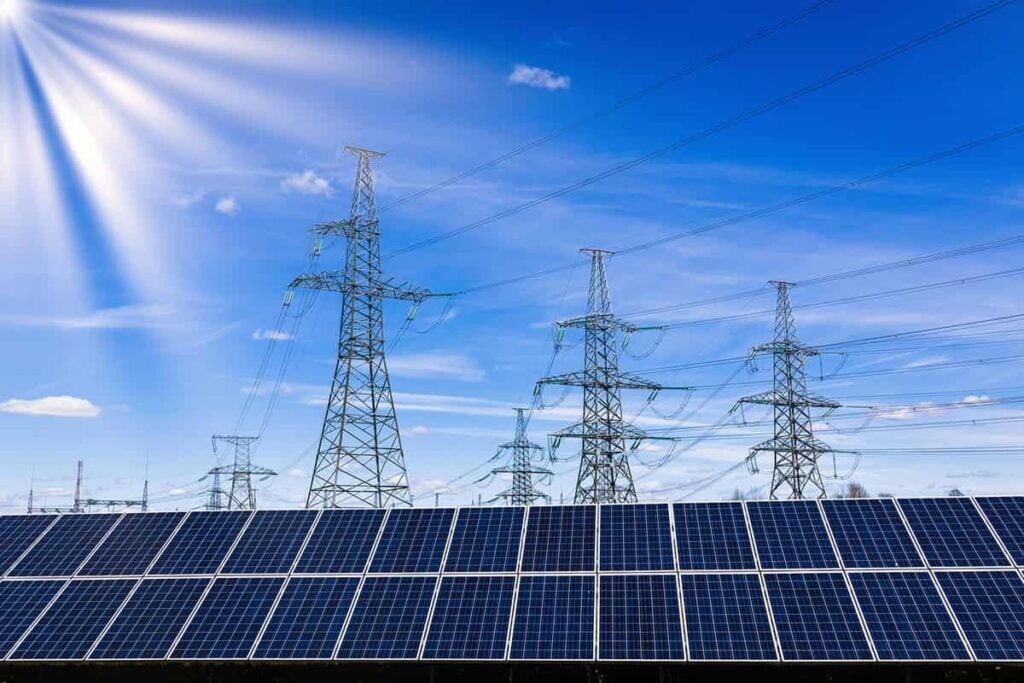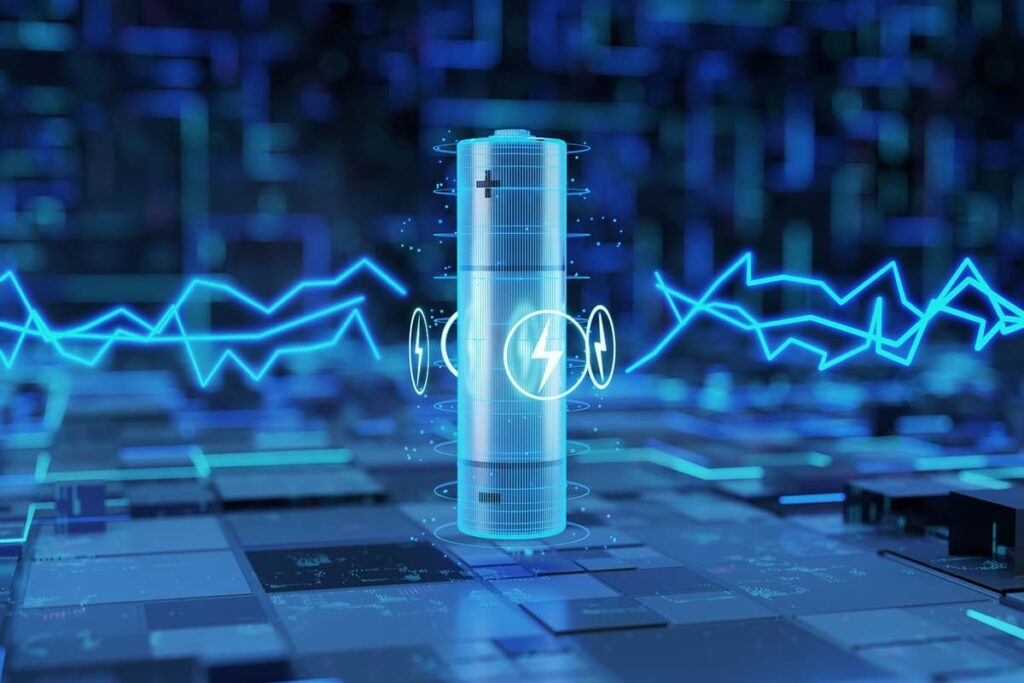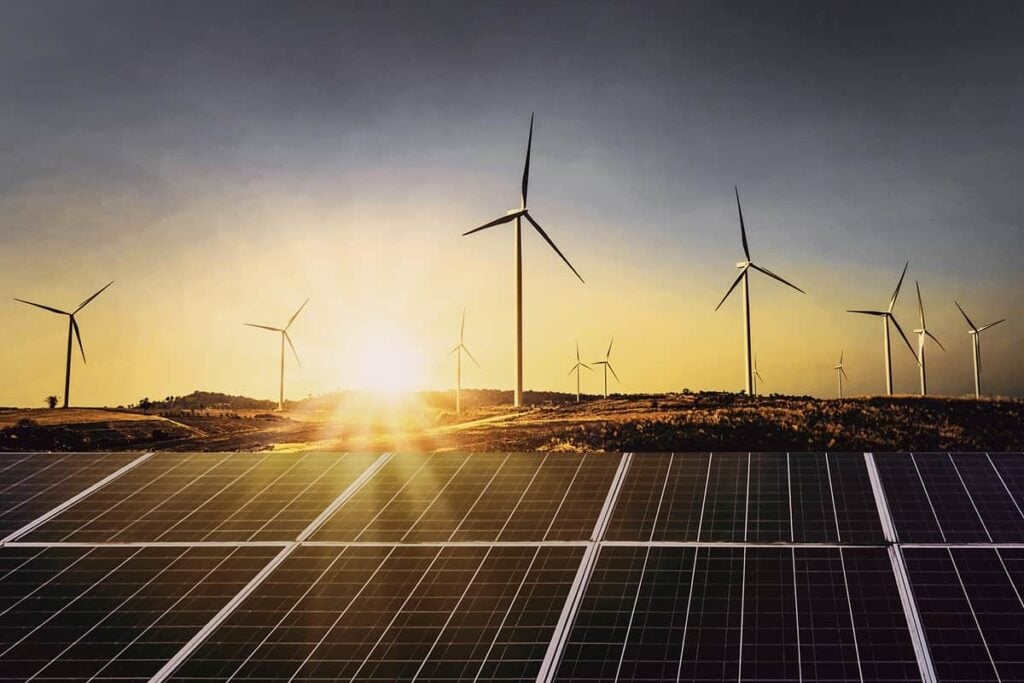4 Compressed Air Energy Storage (CAES) Startups
Table of contents
Table of contents

The term “grid energy storage” refers to the methods we use to store electricity at a large scale. One of the best examples of why you might want to store electricity is solar. When the sun shines, you’re making power, but when the sun sets, the power goes away. Why not use an energy storage solution to store some of the electricity during the day so we can use it at night? That’s the general idea behind “grid energy storage”. The vast majority of energy being stored right now is in reservoirs like this one:

What you’re looking at in the picture above on the left is actually the world’s biggest battery, the Bath Country Hydro Pumped Storage Facility. Consisting of an upper reservoir that stores the “energy” and a lower reservoir which pumps it back up the hill, this massive project provides up to 3 gigawatts of on-demand energy to 13 different states. The way it works is quite simple and explained in the diagram above. Water flowing downhill turns a turbine, then you turn the turbine on in reverse, and it acts as a pump to fill the upper reservoir back up. Such a simple solution to store electricity.
Now you might be thinking to yourself, doesn’t it take electricity to run those pumps? That’s exactly right. You lose electricity when you run the pumps and that’s referred to as “efficiency”. In the case of most pumped-power batteries like the one above, efficiency is around 70%. That efficiency is a benchmark for substitutes, and so far none appear to be economically viable. According to the U.S. Department of Energy, there are 352 “pumped hydro storage” facilities on the planet (50 of which are in the U.S.) that produce the vast majority of grid energy storage:
Now that we understand the basic concept of energy storage and the notion of “efficiency”, we can move on to looking at compressed air energy storage (CAES). About 3 years ago we were writing about energy storage quite a bit (it was a popular topic) and mainly discussed new concepts like large-scale flow batteries. We also looked at two startups that were working on compressed air energy storage – Lightsail Energy and SustainX. Now what we’re going to do is look at all the players that are still in the game today and what they’re getting up to.
Hydrostor
Founded in 2010, Toronto startup Hydrostor has taken in an undisclosed amount of funding to develop an “underwater compressed air energy storage system” or UWCAES which has been making the news recently because they’re working on some commercial projects. While that’s definitely something to be excited about, the size of these projects is rather small, at least the ones they’re admitting to:
To put those numbers in perspective, the output of an onshore wind turbine is roughly 2.5-3 MW. As you can see in the fine print, they’re engaged with several utilities to deploy systems rated at hundreds of megawatts. In regards to the technical details of their solution, here’s a diagram which shows how it operates:
The key metric here is efficiency (70% for pumped-power), and this solution operates at an efficiency of 60%. It’s offered as a complete solution with financing and warranty, and has a 30-year life before efficiency starts to degrade. Their commercial partner is AECOM (NYSE:ACM), a $5 billion multinational engineering firm that constructs these projects.
Update 09/23/2019: Hydrostor has raised $37 million in funding to complete construction of its second commercial reference facility, its Angas Project in Australia. This brings the company’s total funding to $37 million to date.
LightSail Energy

“First, the resources have to be marshaled” she says from atop her steampunk contraption. Well, it seems like those resources have already been marshaled to the tune of $70 million. That same article talks about how they’re “trying to keep investors happy” and that the biggest challenge is “raising more money“. Sounds like the original investors aren’t so keen to shell out more cash for an idea that hasn’t shown much progress from what we can tell. Greentech Media put out an article that said the LightSnail Energy “company culture guru” confirmed that one-third of LightSail staff were let go 2 months after the above WSJ article – their second round of layoffs. Another article by Greentech Media which sits behind a paywall is titled “LightSail Energy Storage and the Failure of the Founder Narrative” which talks about how LightSail employees have lost confidence in Fong’s leadership. If anyone’s looking to hire a “company culture guru”, there may be one looking for a job soon.
SustainX

Apex-CAES
A newcomer on the block is a company called Apex-CAES, and as the name implies they’re developing a compressed air energy storage system of their own. They plan to use compressors and expanders from Siemens (ETR:SIE) to build a whopping 317 MW compressed air energy storage (CAES) facility in Texas. No detail is provided about how much funding they’ve taken in, but they count Siemens as an investor. Here are the project’s details:
According to information provided by Apex-CAES, there are “two existing CAES plants in the world, and the technology has been proven to be highly reliable for over 25 years of operation at each site“. That’s hardly promising. Investors can smell money, especially venture capitalists. They took a look at this idea, they took a punt on it with a few startups, and nothing panned out. While we’re hoping to be pleasantly surprised, the facts we’ve presented thus far lead us to believe that CAES isn’t going to take off anytime soon.
Sign up to our newsletter to get more of our great research delivered straight to your inbox!
Nanalyze Weekly includes useful insights written by our team of underpaid MBAs, research on new disruptive technology stocks flying under the radar, and summaries of our recent research. Always 100% free.




















There’s a little hope going in the small direction, for single applications or light loads maybe. Still early tech readiness. Low pressure, modular compressed air energy storage (CAES) system for wind energy storage applications Abdul Alami
https://doi.org/10.1016/j.renene.2017.01.002
Thank you for that.
This article didn’t attract a ton of readers so I’m not sure we’ll touch on it again unless you know of a firm that really has some traction in this space?
I found this site after I watched a YouTube video of Danielle Fong doing a TEDx talk about LightSail. At this point they appear to have completely shut down although I guess there is some chance of a regroup. $80 million seems like an excessive amount of money to do development and build a prototype to test their idea. It seems like wishful thinking and the pleasure of spending other people’s money may have played in a role in keeping the company going as long as it did. It also sounds like they may have messed with product development way too early. Proof of concept needs to be the primary goal of a company that aims to make something nobody has made successfully before. It would be interesting to know how close they got to a successful proof of concept. Ms. Fong was already talking about delivery dates in the video which seems wildly over optimistic given the apparent failure to ever successfully demonstrate that they had a successful proof of concept.
look up http://www.corre.energy who are taking this technology to the European market at Grid Scale
Cheers for that Dave. Agree with your conclusion.